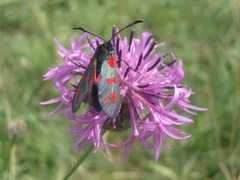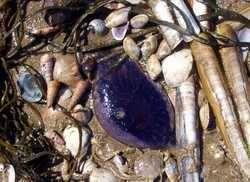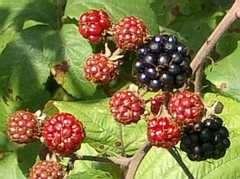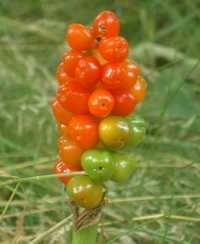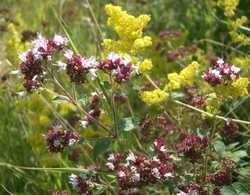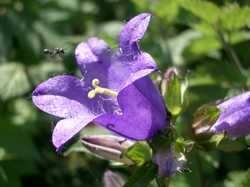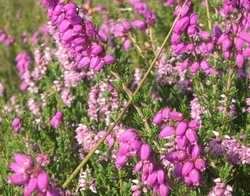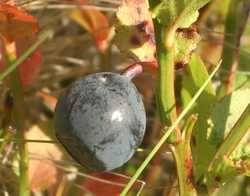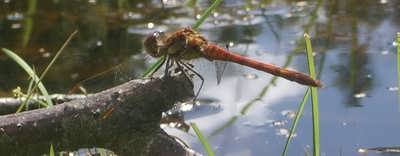When to Watch Wildlife |
J | F | M | A | M | J | J | A | S | O | N | D | Search |
Current wildlife highlights |
||
|
What's new on this site |
||
|
Wildlife calendar |
||
|
Plants and Animals |
||
|
Habitats |
||
|
Wildlife sites |
||
|
WWW links |
||
|
Guide Books |
||
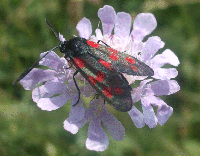 |
||
|
© PMcS 2006 |
|
August |
||||||||||||
|
||||||||||||
|
This month look out for:
|
||||||||||||
August is the
month when high summer turns to late summer. Schools are on their
break and thoughts turn to visits to the seaside. This is a great
time to search along the foreshore, and investigate rock pools for goby
fish, shrimps, crabs, sea anemones, snails and shellfish.
If the weather is hot, the countryside starts to look parched and tired, as grasses brown and even tree leaves start to wilt. In the hedgerows the blackberries have already started to ripen, going from green to red then finally black and delicious. Elderberries also ripen and are feasted on by hungry birds such as starlings and blackbirds. Other berries are ripening too, such as hawthorn ('haws'), sloes and rose hips. These will provide sustenance for many species through the harsh winter months. For now food is plentiful, although the dry ground can cause problems for the ground feeding birds. Early in the month grey squirrels are impatient and insist on cracking open the pale green hazel nuts, even though there is little reward inside. They can be heard chattering and squealing at one another. Aggressive confrontations can lead to tree top chases. Hot days also bring the restful sound of grasshoppers calling ('stridulating') from the long grass, advertising their territories. They are difficult to spot due to their green or brown colour, but soon hop to reveal themselves if disturbed, only to disappear again. In Britain the species most likely to be spotted are the common green, common field and the meadow grasshopper. Other insects on the wing include the meadow brown, small skipper butterflies and large whites. Gatekeepers are particularly attractive orange and brown butterflies that are currently on the wing, and can be found near hedgerows. Waders are returning to the estuaries, having bred in highlands pastures or wetlands in Britain or further north. Some are just passing through on their way back to Africa. Lapwings and golden plovers join knots and bar-tailed godwits feeding on the mud.
|
||||||||||||
| Habitats and species |
||||||||||||
|
Parks and gardens:
As the breeding season draws to a close birds will return to the garden
but as some are moulting may rather skulk around. Put out water
for the birds now as other sources may not be available. |
||||||||||||
|
Woodlands
(including wood pasture): Woods are quiet except for the
occasional robin starting to sing its plaintive and melancholy
Autumn song. Some trees may start to show changes in colour.
Seeds are ripening and soon large-leaved lime, sycamore,
field maple and hornbeam will drop their
winged seeds. In August though, the wings are all still green and
growing. |
||||||||||||
|
Arable and
hedgerows: Invasions of house sparrows may be a thing of the
past now, but they can still be seen as the wheat ripens, enjoying the
feast. Whilst the flocks of yester year are not so likely to be
seen, they do seem to be making a slight comeback. |
||||||||||||
Road verges:
In the bases of many hedges lords and ladies have totally died
down other than the ripening fruiting stem, with its poisonous red
berries. This is the 'lady' part. |
||||||||||||
Chalk and limestone grasslands: Where grassland is allowed to
grow unchecked by grazing late flowering species such as marjoram,
lady's bedstraw, black knapweed, harebells and
field scabious thrive. This month devil's bit scabious
is also flowering. It acquired its name as a result of folk tale.
Its roots are unusual in that they stop very abruptly and the story goes
that the devil, in a fit of peak, finding the plant flowering so
beautifully and prolifically late in the year bit of the bases of the
roots from below. Take a look at the
W2WW field guide for help identifying the key plant species
(including grasses) on limestone.
|
||||||||||||
Meadows (neutral) and flood plain grasslands: Where grasslands, be they pastures or meadows, are overgrazed the ground is often exposed (poached) and plants such as ragwort and creeping thistle colonise and thrive. This often happens in hard grazed fields supporting horses. Ragwort is poisonous to livestock and they avoid grazing it. Is a result large areas can be seemingly dominated by its bright yellow ragwort flowers at this time of the year, and earlier. The cinnabar moth (the adult is black and red) feeds on this species at its caterpillar stage. The caterpillars are black and orange to ward off predators who may view them as a tasty snack. The caterpillar stores alkaloids from the plant which means that birds do indeed find them nasty to eat. |
||||||||||||
|
Acidic grasslands: |
||||||||||||
Heathlands:
Heathland is purple with heath (e.g. Dorset heath) and
heather. Bilberry fruit are now ripe and ready to
eat. |
||||||||||||
|
Mountain
and Moorlands (uplands): August sees the start of the red grouse
shooting season, on the 'glorious twelfth'. Many upland moorlands
owe their existence to this sport although conflicts can occur when
other species, such as hen harriers take a liking to the same
habitat and young chicks. |
||||||||||||
|
Rivers and ponds
(including bogs and mires): Rivers are thickly fringed with
white flowered meadow sweet, great willowherb, purple
loosestrife and emergent grass species such as reed-canary grass.
The water crowfoot will be lush and wide spreading in the clean
and fast flowing rivers. Where the river is slower, and hence more
silty, yellow water lily may be present, and will have been in
flower now for some time. |
||||||||||||
|
Sea and the sea
shore (including estuaries): Sea birds have now raised their young
which are taking to the air. Waders are returning to the estuaries
for the winter. |
||||||||||||
|
Mammals: Bats can be spotted from bridges at night flying over water
whilst hunting for insects. These are likely to be the fairly common
Daubenton's bats. Many bats can be lured to fly close and
investigate you if you flutter a paper hanky in the air above your head.
Go on give it a go - they won't hit you! |
||||||||||||
| Birds:
House martins are finally emerging from their mud cup nests
encouraged by adults who swoop and chatter around them. If the weather
turns bad again they may return to roost in the nests. Large
flocks of martins and swallows can be over fields.
Sometimes swallows, particularly, can be seen lined up together
on telegraph wires preening themselves. Many birds are in the
middle of their moult in August and can look extremely down at heal.
Feathers are replaced gradually so as not to ground the bird. August sees the departure of the majority of swifts. Their short stay in Britain reminds us just how fleeting summer can be. Most migrant birds are, however, with us for a while yet. Woodpigeons, buck the trend at this time of year and may still
be sitting on a repeat brood of eggs. They call with their five
note 'song' and swoop down through the air with several wing claps,
displaying and defending their territory. Starlings,
jackdaws and house sparrows may also be spotted tending to
their young in the nest. The starlings chatter and whistle
at each other from the eves, and other prominent places. They are
great mimics and can be mistaken for other birds, and will even emulate
man made sounds. |
||||||||||||
|
Amphibians & Reptiles: |
||||||||||||
|
Insects: On certain days around this time of the year black ants
simultaneously emerge and swarms fill the air. The females are the
ones with the temporary wings which, after their short flight, they bite
off and then proceed to find a new location to colonise. Damselflies and dragon flies continue to be common in August, where there is permanent water.
|
||||||||||||
|
Plants: |
||||||||||||
| Fungi:
It is too early for most of the Autumn fungi, but some species such as
bracket fungi, that grow on silver birch or beech for
instance, can be found. |
||||||||||||
|
|
All images and text are copyright PMcS 2006
